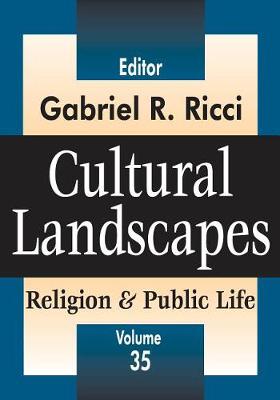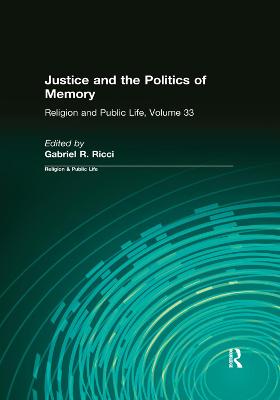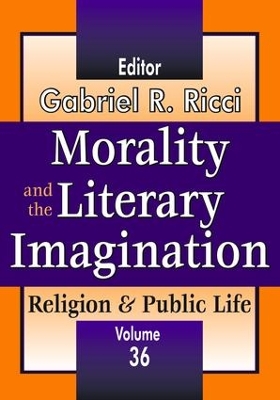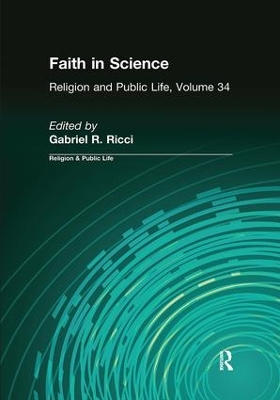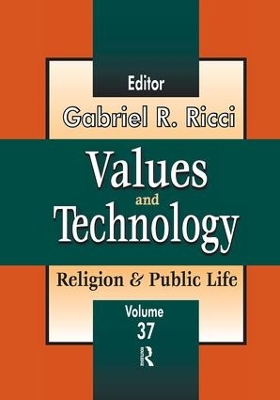Religion and Public Life
6 total works
Memory is not a mere repository for past events. This was Henri Bergson's fundamental claim about consciousness. In distinguishing our psychic constitution by its sense of the past, Bergson differentiates our perception of time from a process in which one instant merely replaces another. While Bergson cast his ideas in terms of the biological sciences, his analysis did not neglect the moral impulse that accompanies the condensation of history with which we continuously live. Classifying human existence in this way bears on ethical and political questions. How such questions can plague the memory of a people and the entire human community is addressed in Justice and the Politics of Memory. The contributors explore the manner in which cultural and psychic violation undermine collective identity, and destroy traditions. They raise troubling questions on how recompense and reconciliation is possible after abominable wrongs have been systematically perpetrated against a community. Faced with the burden of memory, those committed to the righting of wrongs are faced with pursuing an elusive justice that sometimes includes levying reparations and memorializing horrific historical episodes. Guided by the muse of forgiveness, restoration and a more harmonious future are likely to be rooted in the sources of spirituality that had been previously eclipsed by the conquering and homogenizing historical processes. This volume includes Heribert Adam's "Collective Reckoning with a Criminal Regime," Jeffrey Olick's "Lessons from and for Germany," James Hatley's "Levinas, Witness and Politics," James E. Young's "Germany's Holocaust Memorial Problem--and Mine," Tim Giago's "Killing the Indian to Save the Child: The Near Death of Spirituality," Jordan B. Peterson's and Maja Djikic's "Running Ahead: You Can Neither Remember Nor Forget What You Do Not Understand," Derick Wilson's "Where Religion Confuses yet Faith Gives Hope: Conflict Resolution in Northern Ireland," and Leonard Kaplan's "Justice Perfected: Cinematic Exemplifications," and an introduction, "Morality and Memory," by the editor.
In a letter to Boccaccio, Petrarch extolled the virtue of poetry and letters for promoting an understanding of both human nature and morals. The letter was designed to console him after hearing a prediction that he was soon to die and that he ought to renounce poetry. The prophecy came from an elder renowned for his piety, but Petrarch admonished that too often dishonesty and fraud are couched in religious sentiments. Nothing, not even death, according to Petrarch, ought to divert us from literature. For Petrarch, Virgil was the source for understanding how literary studies not only promote eloquence, but enhance morals. If anything, literature dispels the fear of death. The claims of this volume is that it may be the case that the virtuous life can be achieved by those ignorant of letters but a more direct and certain route is guaranteed by a devotion to literature.
The collected works in this new volume of the Transaction series Religion and Public Life heeds Petrarch's advice that literature not only orients us to life's developmental stages, it can provide us with a more complete understanding of the human character while artfully advancing morals. To this end, Michelle Darnell's opening chapter entitled "A New Age of Reason" explains how existentialism is an argument for how literature can take on philosophical form, not as formal argument, but as persuasive narrative. Over the objections of even those who study Sartre, Darnell uses Sartre's The Age of Reason as a model and shows how his literary output was a legitimate philosophical inquiry.
In addition to the Darnell piece, the volume boasts a series of outstanding and innovative works by scholars in the field. Taken together as a whole, these authors not only illustrate the moral consequences of an original choice, but oblige the reader to explore the ramifications of such a choice in one's own life.
There is growing academic interest in addressing the relationship of religion and science. There are also very generous funding sources that encourage scientists to demonstrate the reality of purpose in the world. Still, there are organizations offering support to community groups dedicated to discussing religion and science. Contributors explore this development in Faith in Science. The intellectual initiatives analyzed here seem far removed from the deep religious and cultural divisions that dominate the contemporary geopolitical landscape. This emerging industry, however, originates in a cultural debate that set the evolutionary view of Nature against revelation's conception of Nature as the fulfillment of God's creation. The two worldviews are hopelessly mismatched, although scientific creationism purports to have uncovered scriptural evidence that invites another look. Along the way, the imposition of theological themes onto the geological record became a tendency for many naturalists. Peter Medawar's scathing review of Teilhard de Chardin's The Phenomenon of Man in 1961 remains as a warning for those who mix Darwinian orthodoxy and theological parlance. The challenge, Medawar would have us believe, is not to abandon the exacting methods and logic of science in favor of a poetic dream of how consciousness is a manifestation of energy. But does this mean that science and religion are only methodologically demarcated? Must we insist on the traditional boundaries instituted by scientific conventions and religious beliefs? From various historical, religious, and scientific vantage points, contributors to this volume, who include Guy Consolmagno, Donald Kraybill, David Ray Griffin, Gerald L. Schroeder, Robert Pollack, Robert Pennock, Carol Wayne Wright, Bill Durbin, Kathleen Duffy, and Anthony Matteo, take up these challenges.
Faith, War, and Violence analyzes the age-old links between religion and violence perpetrated in the name of God, and the role religion performs in politically infusing the state with romantic spiritualism. The volume examines instances of this phenomenon from ancient Rome to the modern day; it finds that religion-inspired violence is not restricted to Abrahamic faiths or to one geographic region.
The fact that symbolically charged religious violence has destructive consequences is not lost on contributors to Faith, War, and Violence. Among the subjects tackled are: the ideological and religious foundations that inspired the founders of Al-Qaeda and its role in the Arab Spring; the long history of religious conflict in Ireland known as the Troubles; Sikh extremism; and the evolution of the Christian approach to war.
As the contributors demonstrate, in Western societies, the unity of religious fervor and warmongering stretches from Constantine's incorporation of Christian symbols into Roman army flags to slogans like Gott mit uns (God is with us), which appeared on the belt buckles of German soldiers in World War I. In recent years, George W. Bush declared the war on terror a "crusade," and his speechwriter, David Frum, coined the religiously inspired term "Axis of Evil," to describe Iraq and other countries opposing the United States.
In 1749 Jean-Jacques Rousseau's Discourse on the Arts and Sciences, surprised leading Enlightenment thinkers who had enthusiastically upheld the positive benefits of humanity's technological advance. Voltaire, who celebrated the ends of civilization, mocked Rousseau's praise for an original creative state of nature in which man enjoyed an optimum level of freedom.
Given the unprecedented intrusion of technology into our lives, the question raised by Rousseau's critique may be even more pertinent. In this volume of Religion and Public Life contributors address some of the challenges to conventional morality brought on by the technological augmentation of the social structure. John Barker's essay explores how Luciano Floridi's philosophy of technology has complicated the conventional way of determining what ought to receive moral consideration. Fani Zlatarova provides a practical guide for incorporating ethical components into teaching computer technology.
Grant Havers explores the controversies surrounding the biogenetic explosion through an examination of the competing philosophical perspectives and Christopher Vassilopolos examines the science-based justification for taking life. Gabriel R. Ricci looks at recent political history in the United States in order to highlight the sometimes uneasy relationship between science and social policy. Volume 37 is a welcome addition to the acclaimed Religion and Public Life series.
